Cultural Advice for Business Visitors to Japan
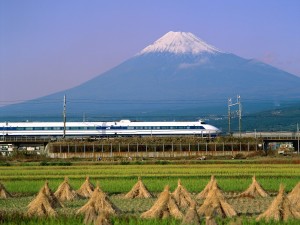
Tips and Tricks of the Trade
For those of you in a hurry who don’t have time to read this whole article, here are some of the key points, tips and tricks for your upcoming trip to Japan. You can click on the items below for more details.
- Don’t exchange currency! Currency exchange services jack up the exchange rate and charge commissions. Instead, withdraw yen in cash from ATMs in Japan as you need it.
- Use all your leftover cash, including coins, to pay your hotel bill when you check out. This avoids losing money exchanging currency and having coins left over.
- Remember to bring gifts for all of the companies you will be visiting! Gifts don’t need to be expensive or creative, but they must be wrapped. Showing up with no gifts is considered rude.
- Call your credit card company before you leave to (1) set a PIN number for your card, (2) inform them that you will be travelling overseas so they don’t block your card for suspicious activity, and (3) confirm the international transaction fees on the card.
- There is no tipping in Japan. No tips will be expected or accepted. This includes restaurants, taxis, valets and “bell boys”.
- Taking a taxi from Narita Airport into the city costs over $250. Take the airport limousine bus or the train (roughly $30).
- Contact your mobile phone provider before you leave to (1) make sure roaming is enabled for your phone, (2) confirm the price of voice and data roaming in Japan, and (3) if possible, pre-purchase roaming data at a discount.
- Make sure you don’t schedule your trip during a holiday period. Click here for a list of holidays.
- Be polite, deferential and humble in meetings. Never interrupt the customer when he/she is speaking.
- If you say you will follow up on something during a meeting, be sure to follow up and provide a response within a week.
Introduction
Japan is one of the greatest countries in the world for doing business. It has a strong work ethic. People are generally polite, honest and ethical. It is still possible to do business “on a handshake” in Japan. Quality products are highly valued and can command a premium price. And the Japanese economy is huge: the third largest economy in the world after the USA and China. Many foreign companies generate 10% or more of their revenues in Japan.
However, Japanese business customs can be confusing for new visitors. Many foreigners make embarrassing mistakes. Hence this simple guide.
Above all, remember two words in Japan, “Respect” and “Humility”. If you are not sure how to act or react in Japan, always err on the side of respect for your hosts and customers, and humility about your own company and your own achievements. Keeping this attitude in mind will stand you in good stead in many business situations.
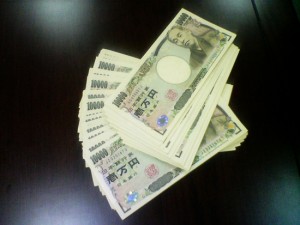
Currency and Payments
Exchange Rates
The Japanese currency is the yen. Fun fact: In Japanese, “Yen” is pronounced “En”.
At the time of writing USD $1 = 100 yen. This makes for a simple conversion, just add two decimal places to the yen price to get the dollar price. A 1000 yen bill is equivalent to a $10 bill and a 10,000 yen bill is equivalent to a $100 bill.
You can check the latest exchange rates plus find rates for other currencies on www.oanda.com.
Acceptance of Credit Cards
When I first moved to Japan in 1990 credit cards were not accepted at most businesses. Japan was a completely cash economy. Most companies actually paid their employees by handing out envelopes full of cash to all of their employees at the end of the month. They would physically transport this cash every month from the bank to the office or factory. This resulted in a few high-profile thefts including one famous case where a thief dressed as a motorcycle policeman stopped a car carrying the yearly employee bonus payments from a bank to a large factory, told them to evacuate the car because it had a bomb planted in it and then made off with nearly $6M (in 2013 dollars). The thief was never caught and the statute of limitations has run out on this case.
Luckily in 2013 most businesses, stores and restaurants accept credit cards, even for small purchases. All of the convenient store chains will accept credit cards even if you’re only buying a can of Coke ($1.50). Visa and MasterCard are most widely accepted, followed by Amex and Diners.
The subway system and local trains mostly require cash to buy tickets although some ticket vending machines recently have begun accepting credit cards even for short trips. For longer trips and reserved-seat tickets (Narita Express, Shinkansen or “Bullet Train”, etc.) you can purchase tickets from the ticket counter using credit cards. Ticket vending machines often accept credit cards but require you to enter a PIN number. Be sure to set a PIN number for your credit cards before leaving for Japan. You can do this by calling your credit card company.
Most taxis in the major cities (Tokyo, Nagoya, Osaka) accept credit cards. You will not need a PIN number but will have to sign the receipt. Taxi drivers are polite and courteous and will gladly accept credit cards even for short distances.
In order to avoid any problems using your card overseas, you should contact your credit card company before your trip and notify them that you will be travelling overseas. If you don’t do this, many credit card companies will see your overseas transactions as “suspicious” and put a block on your card until you call them to confirm. This can be inconvenient and expensive when travelling overseas. Many credit card companies allow you to file a “travel notification” online via their website.
A final note on credit cards. Many credit card companies charge up to a 3% “foreign transaction fee” for foreign-currency transactions. However, there are a few cards that offer “no foreign transaction fees” for frequent international travelers. I know for a fact that Capital One and Bank of America both offer such cards. You may want to contact your credit card company and confirm their foreign transaction fee policy ahead of time, and if appropriate sign up for a “no fee” card.
Currency Exchange
There is no need for you ever to use currency exchange services. I strongly recommend against exchanging your local currency for yen either at your bank before you leave or at the airport when you arrive. Why is this?
The reason is simple. You can withdraw Japanese yen cash from many cash machines in Japan when you need cash (see below). Most banks will give you the “interbank exchange rate” without any commission. Compare this with “currency exchange services” who jack up the exchange rate as much as 4% and often charge a commission on top of that.
What about exchanging your leftover yen back to your home currency? This is not a good idea since you’ll lose money on the exchange rate. Here’s a better idea. Any yen that you have left over (including coins) you can use to pay part of your hotel bill. That way, you do not have to carry back left over change. When you check out, be sure to put the airport bus ticket on your hotel bill, that way you will not need any more Japanese cash for the rest of your trip. Pay the hotel all of your remaining cash, including coins. Then pay the remainder of the hotel bill with your credit card.
Banking System and ATMs
Many Japanese banks’ ATMs do not accept international cards, however recently this situation is improving. You can usually find an ATM nearby that will accept your ATM card. Here are some guidelines:
- There are ATMs that accept foreign cards in the arrival hall of all of the international airports. You may have to look for them, but they are there.
- Citibank has a large presence in Japan. All of their ATMs accept all overseas ATM cards and dispense Japanese yen.
- The Japan Post Office ATMs all accept overseas ATM cards. Look for the Japan Post Office logo:


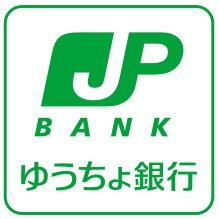
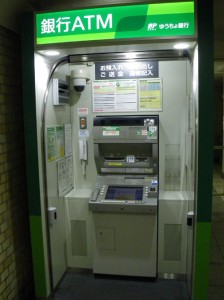
- Most of the convenience stores (7-11, Family Mart, Lawson, etc.) have ATMs that will accept overseas ATM cards.
- Many of the local banks will have one special ATM among their ATM machines that will accept foreign cards. Look for the logos of the international payment networks:

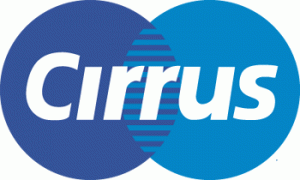
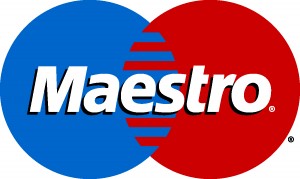
How much cash do you need? That depends on how long you are staying. As a rule of thumb carry 10,000 yen for every day you are staying. If you find that you’re mostly using credit cards and not using much of your cash, you can always get rid of it at the end of your trip by paying your hotel bill in cash.
Tipping
Tipping is not customary in Japan. No tips will be expected or accepted anywhere. This includes taxis, restaurants, “bell boys” and room service at hotels. A service charge will be added to room service and to meals at hotel restaurants.
Local Transportation
Arriving at the Airport
Tokyo is served by Narita New Tokyo International Airport and Haneda International Airport. Most international flights arrive at Narita, however if possible, try to find a flight that arrives at Haneda instead of Narita since Haneda is much closer to the city (a 15-minute, $70 taxi ride). Narita is sixty miles from the city, and a taxi ride costs 25,000 yen, or nearly $250. Most people take the airport limousine bus or the train, which both cost about 3000 yen or $30.
Taking the Limousine Bus
The Airport Limousine Bus is the easiest way to get to your hotel. Although it can take up to twice as long as the train, the bus will take you door-to-door dropping you off at your hotel directly. You will not need to lug your bags through the train station to the train and then into a taxi on the other end. There are multiple routes serving most major hotels in the Tokyo metropolitan area.
After leaving customs, there will be an “Airport Limousine Bus” counter immediately in front of you. The employees speak English. If you go to the counter and tell them what hotel you are going to, they will sell you a ticket, and let you know which bus stop to go to.
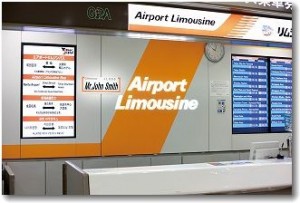 |
 |
Depending on where you are going in Tokyo and the traffic conditions the bus can take from one to two hours (three hours on Friday and Sunday afternoons). Because it goes direct to the hotel, it is especially convenient if you have a lot of luggage or if it is your first time to Tokyo. However, the bus can be delayed by traffic on Tokyo’s notoriously congested roads.
For the return trip to the airport, you can take the bus directly from your hotel to the airport. The cost is 3000 yen, and you can put it on the hotel bill when you check out. Be sure to call the bell desk and reserve a seat the night before. He will tell you what time you need to leave in order to make your flight.
Taking the Train
There are two train services to the airport, the Keisei Skyliner and the JR Narita Express.
Most foreigners take the Narita Express because it goes to stations of more interest to foreigners: Tokyo, with some trains continuing to Shibuya, Shinjuku, and Ikebukuro and other trains continuing to Yokohama and beyond. (Some trains actually divide into two at Tokyo with half the train going to Shinjuku/Ikebukuro and the other half going to Yokohama.)
If you are going to Ueno, however, take the Keisei Skyliner.
Both the JR Narita Express and the Keisei stations are located in the basement of the airport.
After exiting customs, look for the escalator going down from the arrival lobby. It should have a sign for Narita Express. Go down the escalator, then find the Narita Express or Keisei ticket counter. The ticket agents don’t usually speak English, but tell them your destination, class of service “Green” (first class) or “Regular”, and then “Smoking” or “No Smoking.”
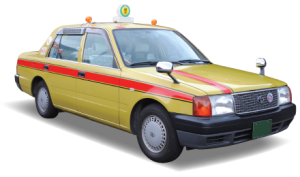
Taxis
Taxis are expensive and most taxi drivers speak no English. It helps to have a business card or a map in Japanese showing where you want to go. The minimum fare for 1.3 miles is 710 yen, or $7.10. After that, it is an extra 90 yen for every 1/5 mile. Most hotels will provide you with a small card that has a map to the hotel and the address printed in Japanese. Take this with you when you go out so that you can easily get home any time by jumping in a taxi and showing the card to the driver. A typical trip within Tokyo should cost no more than $40 depending on the distance.
Always board and alight from a taxi using the rear passenger-side door (remember, that’s the left side of the vehicle in Japan). The driver’s side rear door will normally be locked—do not try to open it even from the inside of the taxi. The rear passenger-side door of Japanese taxis opens automatically to let you in or out. Do not try to open it or close it manually, the driver will open and close it using a mechanical remote control.
Subways and Suburban Trains
The public transport system in Japan is clean and efficient, and is the best way to get around on your own. English language subway maps are available at the hotels and stations. You can download a map from www.tokyometro.jp/en/index.html.
Tickets run from 160 yen to 700 yen and above (cash only) depending on how far you’re going.
Hygiene
Food
Japanese, Chinese and Western food is available at most hotels. Restaurants in hotels tend to be more expensive than those outside the hotel.
Most restaurants do not have English menus but usually they have plastic models of the food in a display case or have photos on their menus. If you feel like getting a taste of the local flavor, you can simply point at what you want. It is extremely rare to find a restaurant that is unsanitary, so you will not have to worry about food poisoning. Tap water and water served at restaurants is safe to drink.
Water
Japanese tap water is safe but tastes of chlorine. Many people prefer bottled water. There should be bottled water in the mini bar in your hotel, but it is expensive so you may want to buy a large bottle of water at a convenience store.
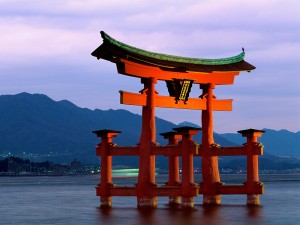
Weather
Tokyo experiences a large range of temperatures, with short, often cold winters followed by a very long, hot summer.
Fall (September – November) in Japan is the best time of year to visit. Expect clear skies, occasional afternoon rain, daytime highs of 70 degrees (F) and nighttime lows of 40. A light jacket or sweater should be warm enough for the evenings. In case of rain most hotels can lend you an umbrella free of charge.
Winter (December – February) is cold, but rarely below freezing. However, it is often windy which makes it seem even colder. Expect clear skies, highs in the low 50s, with lows in the mid 30s at night. Bring a warm coat. It is very rare for snow to fall in Tokyo.
Spring (March – May) is warm, but it rains often. Expect high temperatures of 60 to 75 degrees, with lows of 45 – 60 degrees.
The warm rainy season usually lasts for six weeks starting in late May. It rains almost every day, often quite heavily. If you are visiting between May 1 and July 15, expect to get wet. Unfortunately, the rain does little to lower the temperature, which remains above 80 during the day, making you feel like you are in a steam bath. Wear light suits and shirts, and walk slowly. I do not recommend short-sleeved shirts for business meetings, however.
Summer (July – August) is extremely hot and humid, with temperatures in the 90s and 100s, and humidity often above 90%. Bring light suits and shirts. You will not need a coat or jacket (but you will be expected to wear your suit jacket to meetings). Note that the heat and humidity makes this a very unpleasant season in Japan. Avoid it if possible.
Telecommunications
Internet Access
High speed internet access is available in most hotels. Often in Japan it is included in the rate, otherwise it can run from 1500 to 2500 yen per day ($15 – $25). Hotels usually offer both wired (Ethernet) and WiFi broadband connections.
Unlike the US, most hotels in Japan charge you the standard phone dialing rates to make calls from your hotel phone. Most phones in Japan (including hotels) require you to press zero to get an outside line, but check the instructions in the hotel. I recommend using your computer to make international calls either with Skype or Google or other VoIP services. If that is not possible, it is cheaper to dial direct from the hotel than pay roaming charges on your mobile phone (see below).
Telephones
When using a pay phone, you will need 10 or 100 yen coins, or a prepaid telephone card. Most phones accept prepaid cards; some accept prepaid cards ONLY (no coins). Local calls are three minutes for 10 yen, but if you call a cellular phone, it gets expensive so have lots of coins. Only gold phones can make international calls, but they are usually marked in English as “International Phones.” Of course, you can call anywhere from your hotel phone.
The Tokyo area code is 03, so when calling other numbers with the 03 area code from Tokyo, omit the 03.
Mobile Phones
Japan has three major mobile telephone providers: DoCoMo, KDDI and Softbank. They each use different 3G and 4G technology, but your mobile phone should be able to roam on at least one of these three networks. It is a good idea to contact your mobile phone carrier before you leave to ensure that your phone is enabled for international roaming in Japan and also to confirm the price for voice and data while roaming.
Roaming charges, especially for mobile data connections, are extremely expensive. Many carriers allow you to pre-purchase international data at a discount before you leave on your trip; I highly recommend doing this.
Electricity
Japanese standard current is 100V AC at 50 or 60Hz depending on where in the country you are. The plug is the same shape as US plugs, so you will not need any converters for US standard devices. However, most Japanese plugs do not have the third “ground” prong, so it makes sense to bring a three-prong to two-prong converter. Though 100V is lower than the US standard 110V, most American appliances will run on this voltage. However, irons and hair dryers will not get as hot (though you will not need to bring these with you as most hotels offer hair dryers and clothes irons in the room). Most laptops are designed to work within this voltage range, so you should not need any voltage transformers.
Language
Very few Japanese speak English well, though someone nearby will usually be able to help out with simple requests. You’re pretty much on your own, but there’s not much that can happen to you beyond getting lost. The front desk of the hotel can give you a card with the address of the hotel and a map. If you ever get really lost, just hop in a taxi and show the driver the card. If you don’t have a card, most taxis should understand the hotel name if you pronounce it slowly enough. However, some hotels have different names in English and Japanese, so you may want to ask the hotel front desk how to pronounce the hotel name in Japanese. Here are two examples:
| English Hotel Name | Japanese Hotel Name |
| ANA Hotel | Either “AhNah Hotel” or Zen-Nikkuu Hotel |
| Imperial Hotel | Tay-koku Hotel |
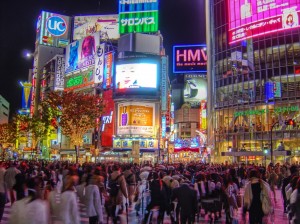
Safety
Road Safety
The biggest danger to your life in Japan, as in other developed countries, is traffic accidents. Japanese drive on the left side of the road, so look to the right as you cross. Looking both ways is even better. Japanese are generally polite drivers and obey traffic signals. However, they do not automatically stop at zebra pedestrian crossings, so be very careful before leaving the curb. Most intersections have pedestrian signals–NEVER cross against a red pedestrian signal. Always cross at crosswalks, not in the middle of streets.
Crime
Japan is a very safe country, but Tokyo, like any other big city, has a certain amount of crime. Most business areas are safe, and you can walk alone at night without any problem.
Avoid the Ueno and Ikebukuro areas at night, as well as the northeast side of Shinjuku station (called Kabuki-cho). Take the same precautions against property crime as you would when travelling anywhere–lock valuables in the hotel safe, keep your passport on you at all times, use the peephole to confirm anyone who comes to your door.
Emergencies
If you get into serious trouble, the police can be reached on any public phone by dialing 110. Fire and ambulance is 119. They will transfer you to an English-speaking operator; just say “English” or “Help” repeatedly until they transfer you. You do not need money to call these emergency numbers, but on older phones you may have to press a red button under a plastic cover to get a dial tone.
Earthquakes
As you no doubt already know, Japan experiences many earthquakes. If you are staying in Tokyo more than a few days, you will likely feel a few earthquakes. Small earthquakes are nothing to worry about. However, if the shaking is violent, be sure to follow these safety rules:
- During the shaking, try to protect your head from falling objects. If you are indoors, it is safest to be under a table or desk. If that’s not possible stand against an interior wall and stay clear of windows and heavy appliances. Do not stand in a doorway–this is a myth! If outdoors, move as far as possible from buildings and keep your eyes up for falling objects. Be particularly careful of trees and power lines.
- Do not immediately rush outdoors after an earthquake as there still may be debris and glass falling from buildings. Be particularly careful not to step on downed power lines.
- If you smell gas, do not turn on any electrical appliances or lights. Evacuate as quickly as possible.
- Only use your phone (including sending text messages) for emergencies. This frees up the bandwidth for emergency workers and victims.
- If you are near the ocean and you hear the tsunami sirens, evacuate to higher ground immediately. If there are no hills nearby then go to the highest floor of a building made of steel or concrete. While tsunamis can be as high as 516 meters (1,720 feet) this is unusual and only occurs in locations with unusual geography. The recent (2011) tsunami was 40 meters (131 feet) in height. This is roughly the height of a seven-story building.
- Be careful opening cabinets and closets after an earthquake as items may come tumbling out.
- Beware that aftershocks, some quite large, will occur in the hours and days after a large quake.
Holidays
The Japanese have a large number of public holidays, as well as three times in the year when employees traditionally take their vacation time. It is best to avoid all business trips to Japan during the Year-End/New Year period, Golden Week and “O-Bon.” See the chart below for details.
Business Customs and Culture
Japan is an extremely formal and polite society. These “customs” may seem to be over the top, but this is really how Japanese do business. As foreigners you are not expected to know all of this, but if you do, the Japanese will be quite impressed and you will find that your business goes much more smoothly.
Attire
Everyone, including engineers, is expected to wear a business suit (including suit jacket) and tie to all meetings with customers, and to all on-site visits. White shirts are more formal and are recommended if meeting a very senior person such as a company CEO or board member. Light colored shirts are acceptable for most meetings. Do not wear dark colored shirts, black shirts or short-sleeved shirts of any color. Always wear a tie and jacket, no matter how hot the weather. Engineers performing installation tasks that require moving, lifting, etc. may wear slacks and a dress shirt or polo shirt with no tie or jacket.
Entering the Building
You must arrive for all meetings at least five minutes early. When entering the building, remove any overcoats, etc., in the lobby, immediately after entering the building. It is rude to enter an office still wearing your coat, so carry it in your arms. Do not remove your suit jacket, of course. Do not put your overcoat back on until you are in the lobby, about to leave the building. Be very quiet and do not talk amongst yourselves when inside a customer’s office building.
After you walk in, there should be a reception desk or a telephone. If there is a reception desk tell the woman (it will always be a woman) your name and whom you are there to meet. Usually one representative from the customer will come greet you and lead you to a conference room or a reception room.
In the Meeting Room
Always sit in the chairs on the opposite side of the table from the door (in other words, facing the door). The host of the meeting sits closest to the door so that if they have to come in and go out during the meeting they will not disturb the “guests” (that’s you).
Do not remove your suit jacket in front of the customer unless you are so hot that you have no other choice or unless the customer invites you to do so. If you are visibly sweating, the customer will usually invite you to take off your jacket. Also, do not cross your legs, stretch out your legs or recline back into the chair during meetings. Do not chew gum. Finally, never blow your nose during a meeting–if you absolutely have to, go to the bathroom first.
After arriving in the room, usually you will sit down and wait for their delegation to show up. In some cases, they will already be there waiting for you, so they will all stand up and you will exchange business cards before sitting down (see below). If they are not already there, you will sit down first, then exchange business cards after they show up. The “highest ranking” person sits in the middle, and everyone spreads out from there with the lowly serfs on the outsides. After sitting down, they will ask you if you want anything to drink. “Coffee,” “Tea” and “Water” are the only acceptable answers here. In summer, you can have your coffee or tea cold (iced). If you ask for “mineral water,” Coke, Diet Coke, Perrier or anything else “exotic” you will get blank stares and giggles. In all seriousness, coffee, tea and water are all most companies can offer, so you should choose one of these.
Exchanging Business Cards
Once all of their people have arrived, business cards are exchanged (sometimes they exchange cards before taking the drink orders, you have to play it by ear). Everyone must stand up (you should stand up when they enter the room, if they are not already in the room when you arrive). The highest-ranking person on each side will exchange cards first, and then everyone will follow in order of importance.
The customer will offer you his card first. He will hand it to you with both hands, and tell you his name. Have your card ready in your hands. Hold it in both hands, with the print FACING HIM so that he can read it, with your head slightly bowed. Introduce yourself, say “nice to meet you” and then take one hand off your card and grab his card at the bottom with your free hand. He will do the same. Bow slightly while reading the name and then look up. If the customer is used to dealing with foreigners, he will probably shake your hand at this point.
Do not put the customer’s business card in your pocket. Place it on the table. It is convenient to place it in the same order that they are seated, so you can remember everyone’s name during the meeting. When you leave, you can put the business cards in your bag, never in your pocket.
Drinking your Coffee/Tea
This is going to sound ridiculous, but it is very important. Normally, a woman will bring in your drinks and set them in front of you. However, do not drink your coffee or tea until the customer invites you to. Also, do not touch it, or add sugar or milk. Usually, you will exchange business cards first, start some small talk, and then they will say, “Please, drink your coffee.” This is when you would add your sugar or milk and drink the coffee/tea. If they do not say this to you, wait until someone on the customer side has begun drinking. It is acceptable to drink after they have started.
During the Meeting
During the meeting, try to let the customer speak first, and never begin answering while the customer is still talking. NEVER INTERRUPT YOUR CUSTOMER, no matter how much you want to. If you are using an interpreter, do not speak for a long time without giving the interpreter a chance to interpret. If giving a presentation, it is essential to have printed handouts to give to the customers to make it easier to follow along. Most Japanese read English much better than they write it or speak it. If you can have the handouts translated into Japanese, the customer will be grateful.
During the meeting, the highest-ranking person on each side is “in charge.” If that is not you, do not answer any questions unless they are specifically directed at you, since this may be seen as a sign of disrespect to the highest-ranking person on your team. This person may defer questions to other members of the team.
Humility and Respect
Japanese culture respects humility. Statements like “We’re the best” or “Our products are the best in the world” are not well received. You should instead talk about what makes your products great and also cite numbers of installations, big-name accounts, etc. to make the point indirectly. If you are visiting a customer to apologize for something, be unequivocal. Japanese hate it when people make excuses.
Also, you should never cut off the customer when he is speaking. Always wait for him to finish, even if he is struggling to speak in English. Do not be impatient.
In Japan, the customer is accorded the highest respect. Never criticize your customer. Never lose your temper.
Ending the Meeting
The meetings will be scheduled for a certain amount of time, so try not to run late. Usually the customer will indicate that they want to wind things up. Try not to make long comments or go off on a new topic at this time.
Handing out Gifts
If you are making a first visit to a customer or if you are meeting people at a high level, you should bring gifts. At the very end of the meeting, after the discussions have been wrapped up, you should take out the gifts. The highest ranking person should hand them to the highest-ranking person on the customer side. If the customer has many people in attendance, you can hand them three or four gifts and tell them to distribute them as they see fit. They will not generally open the gift there, so don’t ask them to or expect them to. If there are only two or three customers present, you can hand one gift individually to each person.
Gifts do not need to be particularly expensive ($10 – $20 each is fine) or particularly creative, however they must be wrapped. Giving gifts is an important part of the culture in Japan; don’t forget them!
Leaving the Meeting Room
Everyone will stand, and they will wait by the door while you leave first. Sometimes they will ride the elevator and see you to the main entrance, otherwise, they will say goodbye at the elevator. Wherever they say goodbye, you will bow to each other from the waist. Remember, do not put your overcoat on until after you are out of sight of the customers either in the lobby or outside the building.
Follow Up
It is important that someone on your side take meticulous notes during the meeting. Especially, take note of every time during the meeting that you promised to look into something and provide an answer at a later date. The customer will be taking meticulous notes as well. If you have promised to provide them a response to certain points at a later date, DO IT. Your company’s credibility will be judged on whether you actually provide these responses and how quickly you do so.
